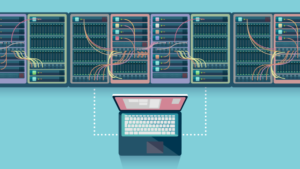In today’s fast-paced and interconnected world, IT projects are rarely the work of a single individual. The Importance of Collaboration and Teamwork in Modern IT Projects. In today’s fast-paced and interconnected world, IT projects are rarely the work of a single individual. Whether it’s developing cutting-edge software, managing complex networks, or ensuring robust cybersecurity, IT professionals must collaborate closely with colleagues across various departments. This collaborative approach is not just beneficial but essential for the success of modern IT projects.
The Role of Teamwork in IT
- Cross-Departmental Collaboration:
Modern IT projects often require input from multiple departments. For instance, developing a new software application might involve not only software developers but also input from marketing, sales, and customer support teams. This cross-departmental collaboration ensures that the final product meets the needs of all stakeholders and is aligned with the company’s overall goals. - Agile Methodologies:
Many IT environments today use agile methodologies, which emphasize iterative development, continuous feedback, and flexibility. Agile teams work in short cycles called sprints, where they plan, execute, and review their work. This approach requires strong teamwork and communication, as team members must constantly share updates, address challenges, and adjust their plans based on feedback. - Effective Communication:
Clear and effective communication is the backbone of successful teamwork. IT professionals must be able to articulate their ideas, share their progress, and discuss any issues they encounter. This communication can take many forms, from daily stand-up meetings to detailed project documentation. Effective communication helps prevent misunderstandings, ensures everyone is on the same page, and keeps the project moving forward smoothly. - Shared Responsibilities:
In a collaborative environment, responsibilities are shared among team members. This not only distributes the workload more evenly but also allows team members to leverage each other’s strengths. For example, one team member might excel at coding, while another might be better at testing and debugging. By sharing responsibilities, the team can work more efficiently and produce higher-quality results. - Positive Team Dynamics:
A positive team dynamic is crucial for maintaining morale and motivation. When team members support each other, celebrate successes together, and constructively address any conflicts, they create a more enjoyable and productive work environment. Positive team dynamics also foster a sense of belonging and commitment, which can lead to higher job satisfaction and lower turnover rates.
Collaboration and teamwork are vital components of modern IT projects. By working closely with colleagues across departments, communicating effectively, sharing responsibilities, and fostering positive team dynamics, IT professionals can significantly increase their chances of project success. As the IT landscape continues to evolve, the ability to collaborate and work as part of a team will remain a key skill for any IT professional.
Contact us for more Info Univisionz




